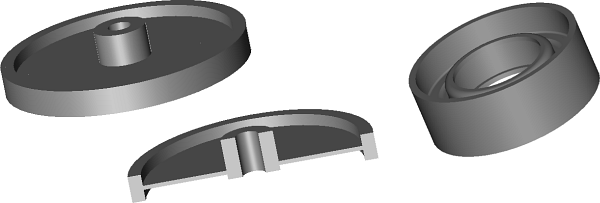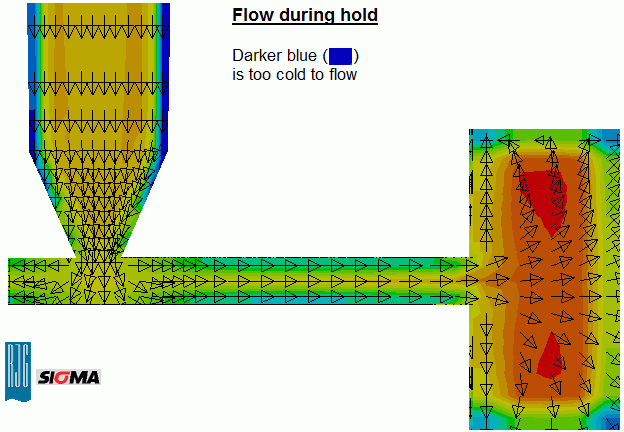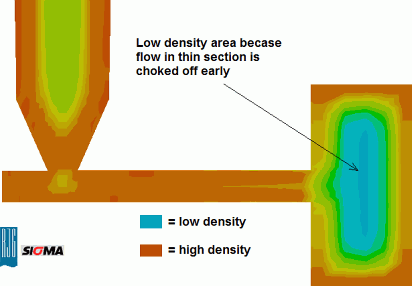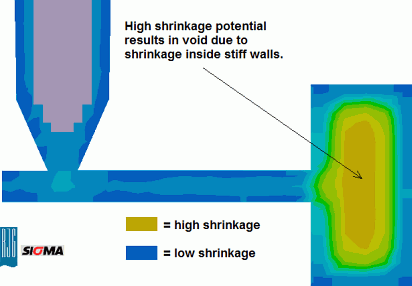Tip of the Day 184: Thin to Thick Wall: Molder’s Misery part 2
Now let’s reverse the situation for mixed wall thickness as discussed in tip 183. We often see this situation in such parts as idler wheels, gears, impellers and so on. These parts have a thick outer rim with an inner “web” that has been made thin to save weight and cost. Typically they are semi-crystalline parts.

Being semi-crystalline, a substantial amount of flow occurs during hold. The material shrinks dramatically as it crystallizes (see tip # 178). Sometimes up to 10% of the total material required can flow into the part during hold.
But, at the same time the thin rib section is also cooling. With less mass and thickness it cools much faster, closing the flow channel. As flow decreases, the heat supply keeping the rib “open” decreases. This rib acts like a gate that freezes before the thick outer rim has enough material in it. Like so…

The thick rim that has flow “choked off” becomes a low density area. In fact, the flow through the thin section ceases before even before the gate freezes.

It follows, then, that this low density section will continue shrinking as it cools and create a void (in this case). The strength of the material (acetyl) is able to hold the outer wall rigid while the inner section shrinks. This makes a void instead of a sink.

What to do?
- Part Design?
If the outer wall could be made thinner its freeze time would more closely match that of the inner web. Or perhaps some ribs from the gate to the outer wall would stay open long enough to feed the shrinkage in the rim.
- Differential Cooling?
As before, we are trying to match the plastic variable(s): Cooling Rate and Cooling Time. We might be able to slow the cooling of the thin section by allowing the mold in that area to run hotter. This could keep the “pipe” open to feed the full shrinkage of material into the core of the rim.
Note: If the material is fiber filled much of the shrinkage behavior will be controlled by fiber orientation rather than the quantity of polymer in the final part.